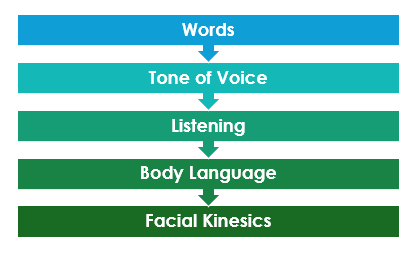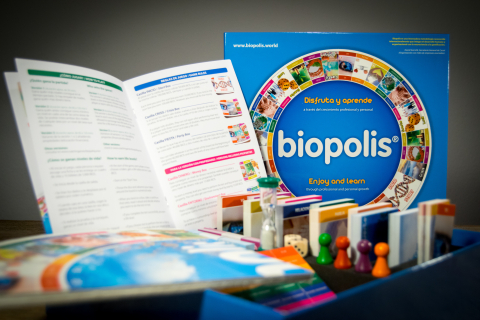Successful Communication and Diversity of Languages (Part 1)
Our success and survival as a species and individuals depend, to some extent, on our ability to communicate effectively.
This communication can flow through different types of languages: verbal language, written language, body language, language of expressions, language of silence... and elements that facilitate or hinder our daily encounters.

Have you recently reviewed with your team the following 5 key elements for effective communication?

1. What Are Our Words Like?
• Words help us connect with ourselves (through our internal dialogue: beliefs, self-saboteurs...) and with others.
• Reviewing our vocabulary and being aware of the distortions in our thoughts (generalizations, catastrophizing, presuppositions...) can be very useful.
• Words can influence our thoughts, emotions, and actions negatively or positively.
• Words represent a part of our inner world.
• Words can create (as bridge words) or destroy (as dart words).

2. Do We Take Care of Our Tone of Voice?
The tone of voice is one of the most influential communicative elements.
Within the tone of voice, there are several sound parameters, such as intensity, rhythm, vocalization, projection, timbre... that give meaning to the message we want to convey.
Communication specialists say that tone of voice can account for up to 30% of our nonverbal communication.
A study from the University of Barcelona reached the following conclusions:
- A deep tone of voice suggests maturity and instills confidence.
- However, an overly deep tone of voice may connect us with fear.
- A firm and confident voice leads us to believe that what is being said is important.
- Speaking with a low tone of voice may lead us to think that the person is unsure and conveys little credibility.

Building upon these statements, we can consider that the tone of voice doesn't have to be always the same, and we can modulate it depending on the message, the situation, and the person we want to communicate with.
3. Do We Promote Listening in the Organization?
Listening is one of the most useful human competencies for empathizing and connecting with the world of others, and at the same time, it's an art in our society.
The wisdom of our body already provides us with information by having two ears and one mouth.
By listening to others, we consider them and make them feel important.
It's very necessary to listen beyond words, observing body language, facial microexpressions, and what is not said...

Certainly, at times we encounter some obstacles when it comes to listening: physical environment (noise, small spaces, crowds...), anxiety to respond, tendency to judge and advise when not asked...
A very useful exercise when you want to give advice to someone is to ask them: "About what you're explaining to me, do you want me to tell you what I think or what I would do?"
Here's a video where Teresa Baró proposes 10 key points to consider to improve our active listening:
https://www.youtube.com/watch?v=UiEvdA98QbM
At Biopolis, we enhance the communication strategies mentioned through the creation of a playful, safe, innovative, and creative space to achieve richer, more diverse, and effective communication among teams.
Would you like to explore further?
In the upcoming days, you'll be able to access the second part of the article, where we'll share about body language and facial kinesics for communicative improvement.
References:
- "El lenguaje de los gestos" by Flora David
- "El Método Bravo" by Mónica Galán. Editorial



